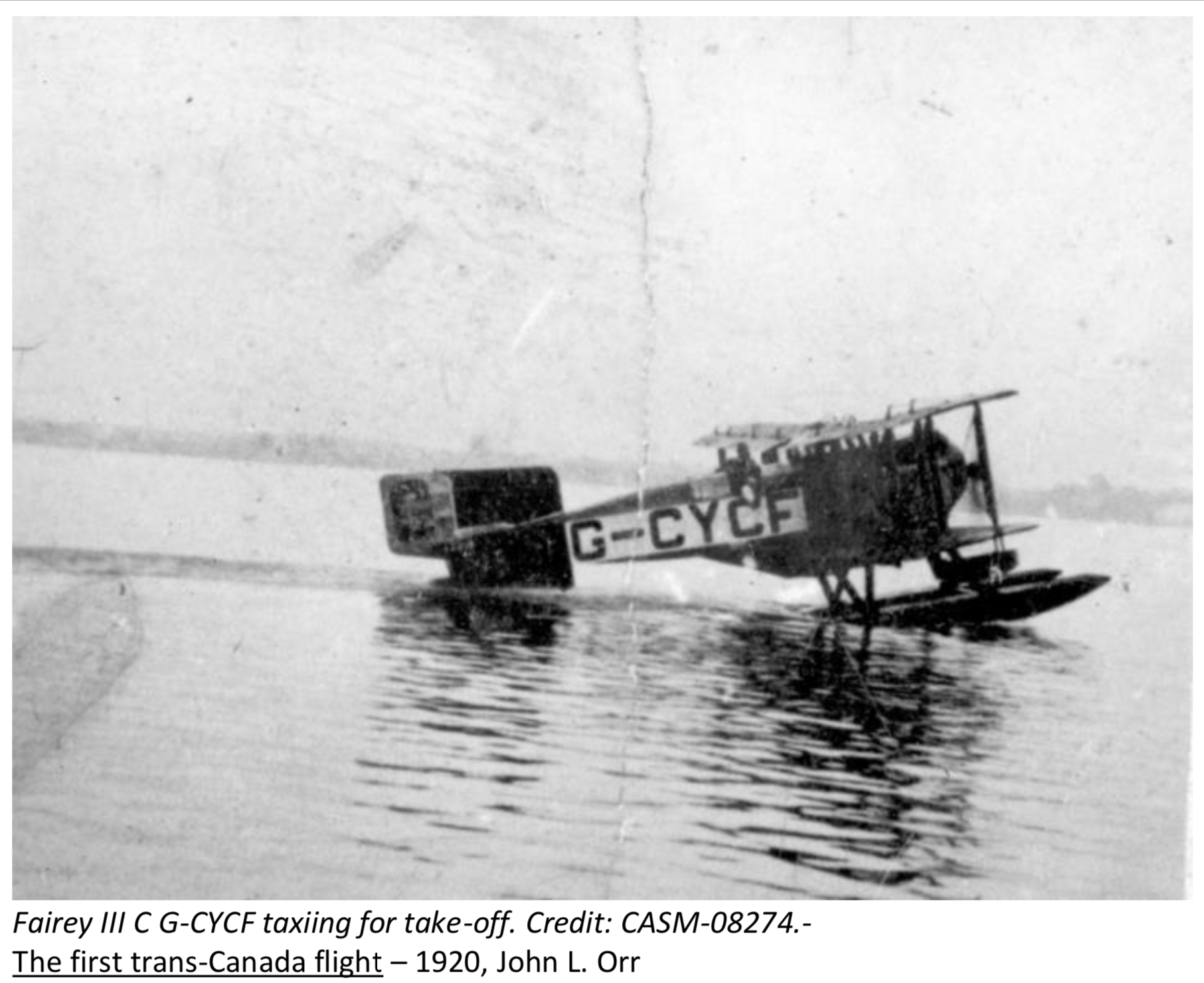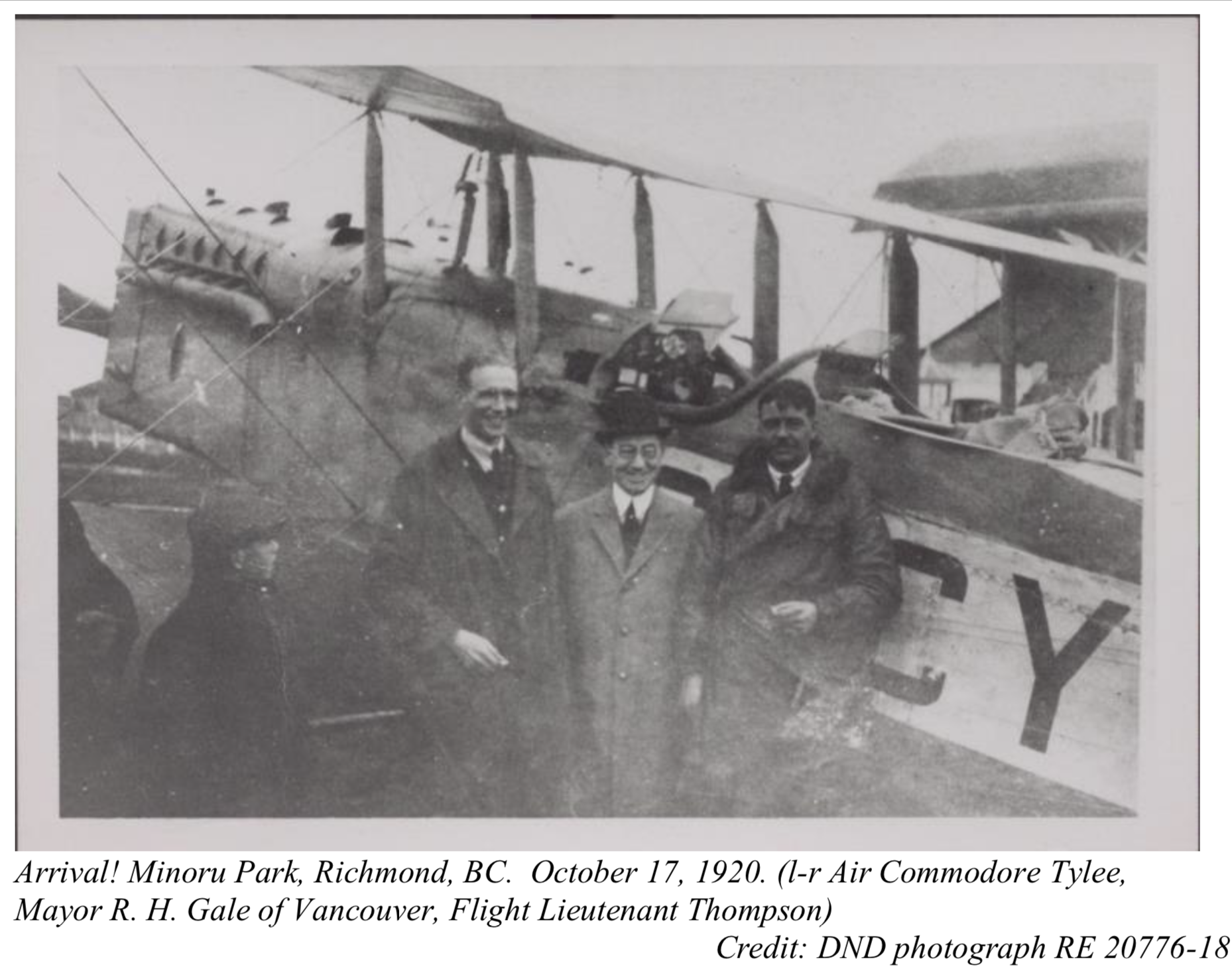One Hundred Years Ago: First Atlantic to Pacific Flight
On October 7, 1920, the first trans-Canada flight began at Canadian Air Board Station Dartmouth, Nova Scotia, the current site of the Royal Canadian Air Force’s 12 Wing Shearwater. Their destination was Vancouver, nearly 5,400 kilometres away.

On Wednesday, October 7, 1920, pilots of the regulatory branch and fledgling Canadian Air Force of the Canadian Air Board departed Dartmouth Air Station on the first flights from the Atlantic to the Pacific. Starting Tuesday, 6 October 2020, the Shearwater Aviation Museum (SAM) will post a series of brief daily snapshots on Facebook highlighting the flight as it made its way to Vancouver arriving 10 days later. The lack of infrastructure, meeting logistics requirements, aircraft and engine reliability issues were among the challenges overcome in this significant first trans-Canada flight. The lessons learned and the enthusiasm of the public clearly set the stage for substantial growth in every aspect of aviation throughout Canada enabling passengers, mail and cargo to travel between places conveniently and more quickly than had ever been imagined.
This important, but little-known, chapter of Canada’s aviation history was planned, organized and executed by the Canadian Air Board, a short-lived (1919-1922) department of the Dominion government. It was the Air Board that played the key role in the development of Canadian aviation, both civil and military, in the aftermath of the First World War.
The idea of a trans-Canada flight was seized upon by the Air Board in order to demonstrate the utility of aviation to the Canadian public and, perhaps more importantly, to Canadian politicians. Not incidentally, it was also an account of guts and determination as a small group of aviators battled the elements and blazed a trail across the country.
Responsibility for the flight was divided between the Air Board’s Flying Operations Branch flying seaplanes and flying boats and the Canadian Air Force, flying landplanes. Originally planned to take 48 hours using relays of aircraft across the country, the flight took 10½ days. Given the state of aviation at the time, and the perils involved with flying open-cockpit aircraft in Canada in October, this was not an unreasonable amount of time.
It was during a driving rain storm at 11:25 am on October 17, 1920 that the flight finally reached Minoru Park in Richmond and was met by R. H. Gale, the Mayor of Vancouver. While the trans-Canada flight officially terminated at Minoru Park, four of the members of the team continued on to Victoria where they presented letters that had been carried on the flight to the Lieutenant Governor of British Columbia.
Please remember these dauntless aviators. They were the pioneers who demonstrated the truth of the comment of former Governor-General Vincent Massey who stated that “The aircraft came to Canada as a godsend. It probably has meant more to us than it has to any other country."
Our thanks to Jack McGee, past BC Aviation Council Executive Member, for providing these store materials.




